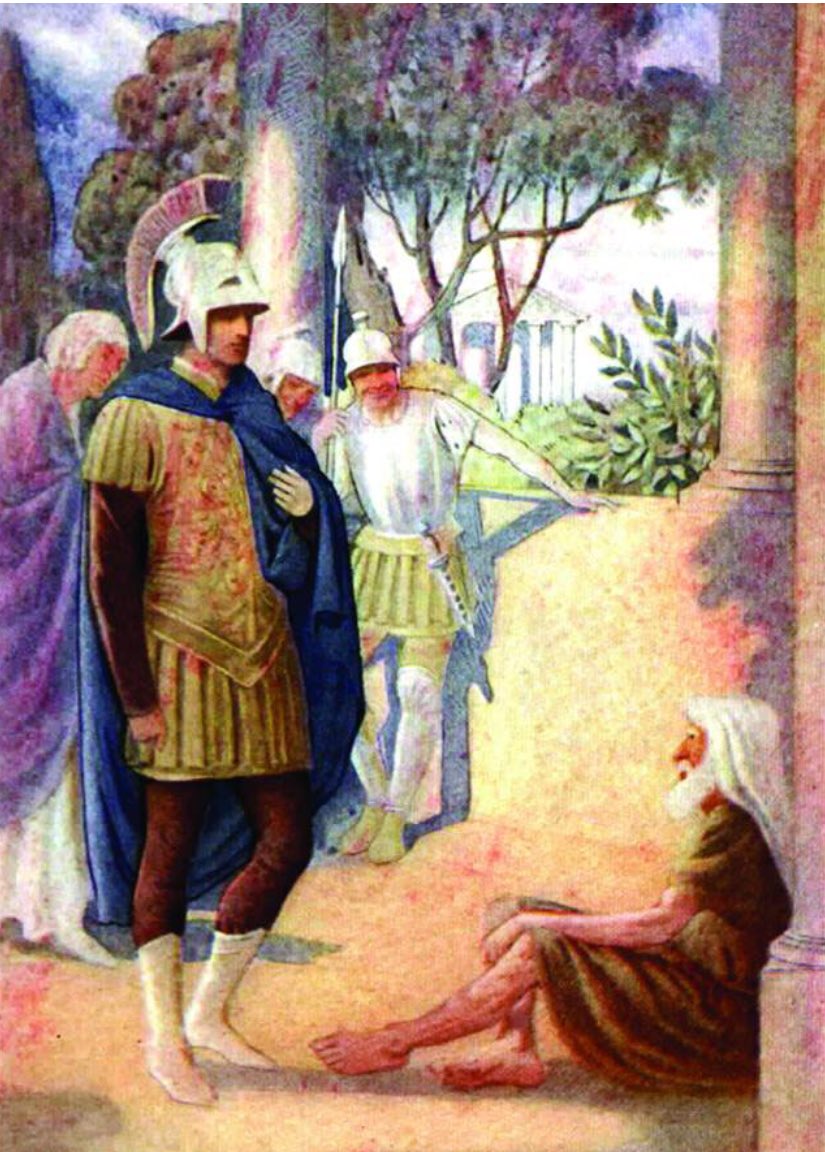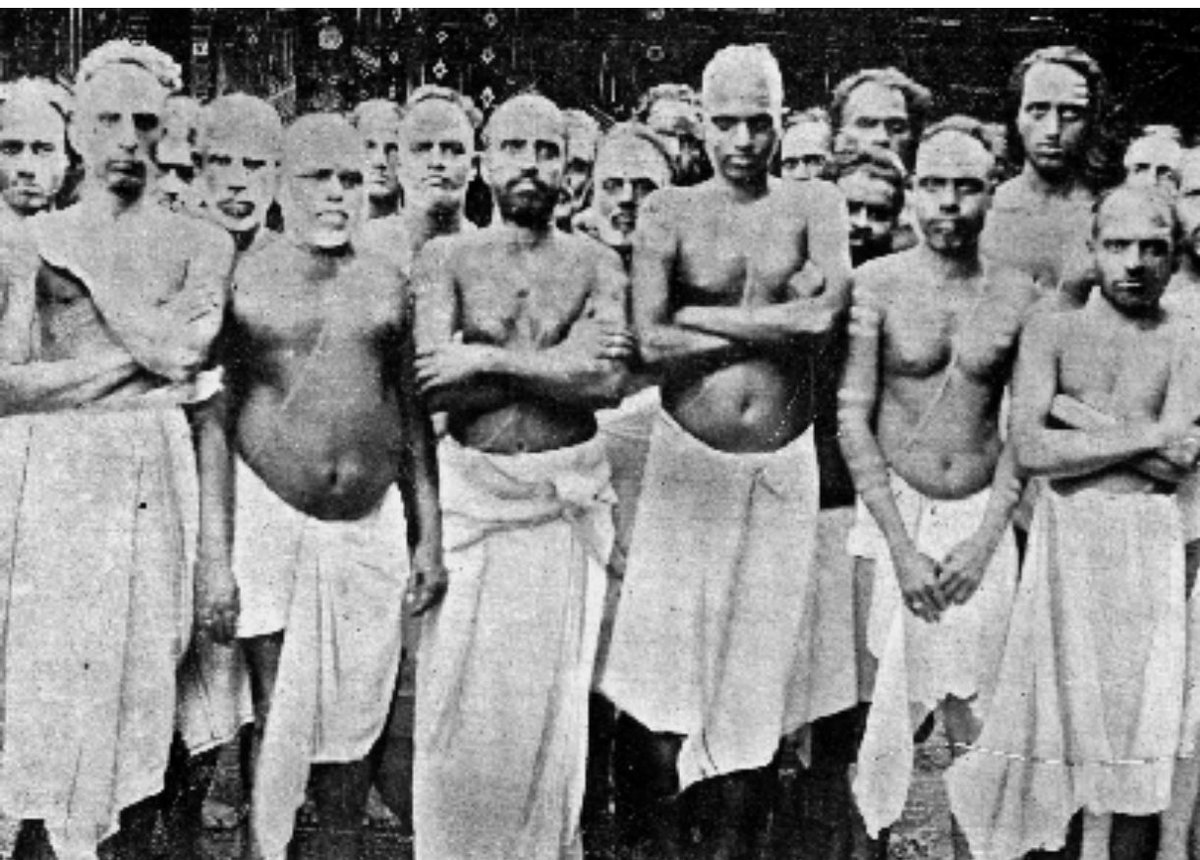It occupies a central place in Vedanta, and has been commented upon by Acharyas in all the great Vedantin traditions - the most prominent among whom are Sankara, Madhwa and Vedanta Desika
This has naturally provoked a discussion on cultural appropriation
In 2016, Rahul Gandhi quoted from the Isha Upanishad to score a political point. Here is his tweet -
abebooks.com/Isavasya-Upani…
Adi Sankaracharya - 8th century commentary (Advaitin view)
Vedanta Desika - 13th century commentary (Sri-Vaishnava / Visishtadvaitin view)
The Upanishads are rightly regarded as being among the most important as well as the most consequential of all Hindu scriptures.
Among the 13, the Isha Upanishad is one of the shortest with just 18 verses. And among the most popular
I may be wrong on the regional prevalence, but this is what I can gather from public domain
Dating Upanishads in general is a somewhat pointless exercise as they are in essence anthologies, so the date of the compilation of anthology could well be very different from the date of the composition of individual hymns
And the traditional skepticism at these dates is warranted for the reason we discussed in the previous tweet
Mysore Hiriyanna in his 1911 work on Isha Upanishad (working with Sankara’s commentary on the Kanva recension) thinks of this small work as comprising of four parts.
I am paraphrasing him below -
Verse 2 : Directed to those who cannot seek the Self as suggested in Verse 1 and hence the emphasis for them is to engage in Karma.
Verse 9-18 : Commends the simultaneous practice of Karma and upāsanā for persons referred to in Verse 2.
The introductions are strikingly different
Despite its association with Samhita, Sankara urges us to view it as a mainly philosophical text, that should not be used in any Vedic ritual. I quote him from his introduction -
(Contd..)
The action vs Knowledge dichotomy is less evident in Desika’s bhashya
Verse no 1 :
ईशा वास्यम् इदं सर्वं यत् किञ्च जगत्यां जगत् ।
तेन त्यक्तेन भुञ्जीथा मा गृधः कस्य स्विद्धनम् ॥ १ ॥
“By one’s own Self,—the Lord, the supreme Self—which is the sole reality, all these unreal (things), both movable and immovable, have to be covered over”
(Contd..)
We notice a very strong monistic orientation as one would expect from Sankara. We also notice Sankara saying that the one who indeed seeks to realize the true self must renounce desire and not engage in Karma
Firstly we note that Desika differs from Sankara even in the interpretation of the first two words of the verse - “ishA vAsyam”
In contrast, Desika defines vAsyam as “Fit to be pervaded”.
(Contd..)
So it is a very distinct interpretation
कुर्वन्न् एवेह कर्माणि जिजीविषेच्छतं समाः ।
एवं त्वयि नान्यथेतोऽस्ति न कर्म लिप्यते नरे ॥ २ ॥
“Do you not remember the aforesaid antithesis between jñāna and karma?
Here also the same has been expressly stated in verses 1 and 2,—(that he who seeks to live must perform karma and that he who does not, must give up all desire”
“Now, if it be asked, will there not accrue bondage to the knower of Brahman, since there is the performing of work (karma), the teacher says - “Works do not get smeared over man””.
Verse 5 :
तद् एजति तन् नैजति तद् दूरे तद् व् अन्तिके ।
तद् अन्तर् अस्य सर्वस्य तद् उ सर्वस्यास्य बाह्यतः ॥ ५ ॥
Sankara’s bhAshya is briefly paraphrased below -
“The self does not move. Being in truth it is motionless, and it only appears to move.”
(Contd..)
"“It is near to the wise, as it is their very Self”
“It is not merely far and near, it is inside of all this”.
How does Desika handle this verse? Here are his paraphrased comments
हिरण्मयेन पात्रेण सत्यस्यापिहितं मुखम् ।
तत् त्वं पूषन्न् अपावृणु सत्यधर्माय दृष्टये ॥ १५ ॥
Largely because of the famous Surya namaskAr Asana - a very popular Yoga asana that begins with the chanting of this verse.
Here are Sankara’s comments (with paraphrasing)-
So Sankara bhAshya on this verse is pretty brief.
To him, the golden vessel (hiranmaya patra), is a vessel full of Rajas (passion) and is full of rAga (attachment and redness) which obstructs activities related to the Supreme Self."
(Contd..)
Sankara :
wisdomlib.org/hinduism/book/…
Vedanta Desika :
archive.org/stream/Ishavas…












